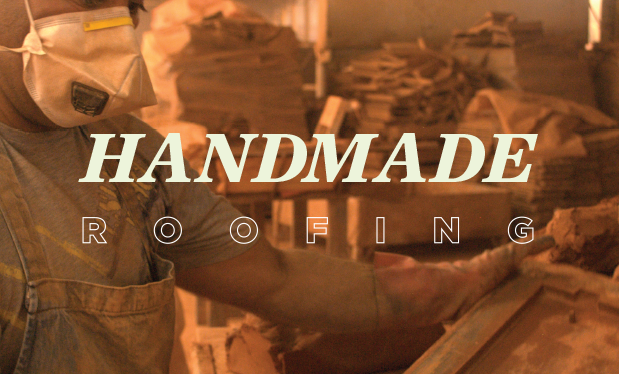During a recent visit to Puerto Rico, I hiked in El Yunque National Forest, the only tropical rain forest in the National Forest System. Although the lush foliage, waterfalls and rivers were abundant, one essential element of the ecosystem was either sparse or totally missing: a tree canopy.
In fact, more than 70% of the roof of this beautiful rain forest was destroyed by Hurricane Maria two years ago. Hurricane Maria had winds of 155 miles per hour and was the strongest storm to hit Puerto Rico during the past 85 years. Indications are it may take centuries for El Yunque National Forest’s tree canopy to return to its prior state.
Although there may be debate about the causes, global statistics confirm the increasing frequency of more extreme weather: intense tornado outbreaks, record-setting heat, catastrophic wildfires, heavy downpours, longer droughts and more destructive hurricanes. The U.S. experienced $306 billion in damage in 2017 as a result of natural causes, a record amount, according to the National Oceanic and Atmospheric Administration.
These record weather events have lasting consequences on the built environment.
Progress
During the past 15 years, the construction industry has made great progress improving its products and installation practices to create high-performing buildings. Whether it’s through improved integrated design practices, roofing technology advancements, certification programs such as LEED® or science-based performance code requirements, building product manufacturers and contractors should take pride in this century’s built environment thus far.
But the construction industry’s greatest challenge lies ahead. How do we respond to extreme climatic disasters?
Historically, governmental response has been predictable: funding repairs but falling short in expanding pre-disaster efforts. Fortunately, that is beginning to change as the Federal Emergency Management Agency has begun a strategic pre-disaster mitigation planning process detailed in its National Mitigation Investment Strategy, which was released in 2018.
In that plan, the agency seeks to catalyze private and nonprofit sector mitigation investments; improve collaboration between federal, state and local governments; and ensure data and risk-informed decisions include lifetime costs and risks. In addition, in 2018, Congress passed the Disaster Relief and Recovery Act, providing for pre-disaster mitigation funding for communities, which indicates the philosophy within government regarding disaster planning is gradually changing.
Many sectors within the building industry are recognizing the need for manufacturers and contractors to work together to create a more resilient built environment. Of course, the issue of the economics of resilient construction is critical, as well.
A recent report issued by the National Institute of Building Sciences, which is a third iteration of prior analyses of this data, demonstrates an 11-1 payback for pre-disaster mitigation investments that include, among other things, compliance with the 2018 versions of the International Residential Code® and International Building Code®—the model building codes developed by the International Code Council.®
Broad support
The promotion of resilient design and construction has become a high priority for leaders in the building industry.
For example, the U.S. Green Building Council’s RELi resilience rating system is emerging as the new leadership benchmark for resilient buildings and neighborhoods. RELi promotes resilience by requiring assessment and planning for acute hazards, preparedness to mitigate against them, and designing and constructing for passive survivability.
In addition, USGBC and more than 40 construction and design industries are working to create an industry statement addressing the need for additional resilience efforts. To this point, the ICC and ASHRAE Inc. have developed significant working groups to focus on creating resilient buildings and communities.
And the insurance industry, through the Insurance Institute for Business & Home Safety,® has developed a Fortified Commercial Building standard that it is promoting nationwide. The program promulgates standards that go beyond building codes to strengthen commercial buildings against specific natural hazards such as high winds and hurricanes. The standards are based on more than 20 years of scientific research and field testing by IBHS.
Building product manufacturer groups such as the EPDM Roofing Association, which recently issued its report “Building Resilience: The Roofing Perspective,” have recognized their critical role in moving toward a more resilient built environment.
Roofing challenges
But there is another critical consideration for the roofing community to address: What is the standard of care for roofing contractors and others involved with the design and installation of roof systems?
Put differently: Should roofing contractors be called upon to reasonably foresee the conditions to which a roof system may be subjected? And how much knowledge should they have about the impending climatic changes in the geographic area(s) in which they work?
These questions only breed more questions. Are there publicly available flood and/or storm maps? Do recent climate projections and studies reveal vulnerabilities? How much research is a contractor supposed to do to determine whether the “100-year event” is something that could occur again soon despite one such event occurring the preceding year? Are there superior roof systems and installation practices available? Should a contractor offer upgraded systems to building owners even if the cost may deter an owner from accepting the suggestions? Should a roofing contractor refuse to install a less expensive roof system that is not up to necessary resilience standards?
Historically, compliance with existing building codes has been the first line of defense against design or installation liability actions. Given how long it takes to develop and adopt building code changes and the speed with which change in weather patterns is occurring, one can only wonder how long building codes will remain a shield for the design and contracting community. Reliance on older standards from the 1970s, 1980s and even early 2000s may not be sufficient to cope with what will happen in the near future.
So conscientious roofing contractors are going to need to go further than industry customs to protect themsleves from potential liability in the event of a climate catastrophe. They can do this by more rigorously reviewing historical and projected climate events in their geographic areas, as well as having thorough knowledge of rapidly changing codes and standards. For example, in July, FEMA issued a new 3D roof “snow drifts” design guide referencing ASCE 7 that can be found at www.FEMA.gov. Of course, the challenge will be to weigh the likelihood of a catastrophic event and resulting loss of life and property with the possible increase in cost of preparing a building to withstand that catastrophic event.
A whole new world
There is no doubt we are in new territory as we face changing weather patterns and increasingly violent weather. But the building industry already has taken important steps to address these threats, and given the current efforts, there is every indication it will continue to do so.
However, none of these efforts will have the desired effect unless there is access to skilled labor in the roofing industry. NRCA ProCertification,™ which certifies roof system installers and foremen nationwide, is an essential component of creating a resilient built environment. Skilled workers are needed to incorporate upgraded standards into roof systems that will withstand increasingly destructive weather.
With clear leadership, sustained funding from the government and a skilled workforce to implement change, a resilient future becomes not only possible but probable. And, not coincidentally, this simultaneously will create a resilient future for the companies that manufacture and install roofing products.



